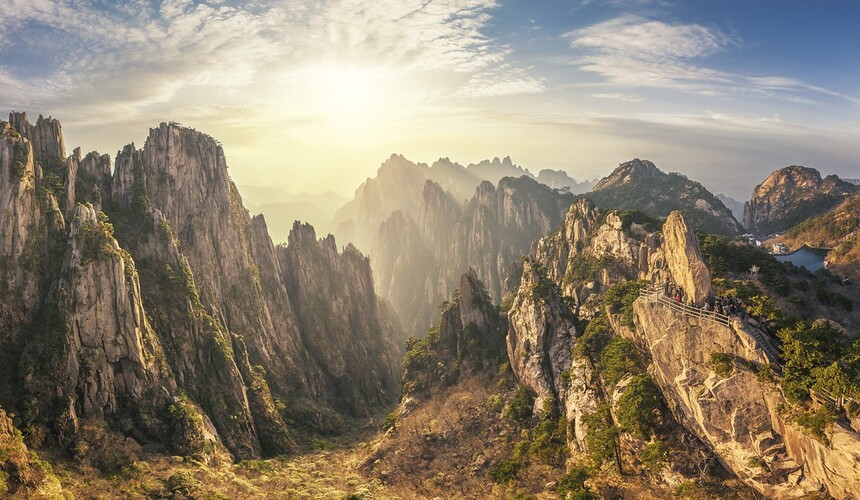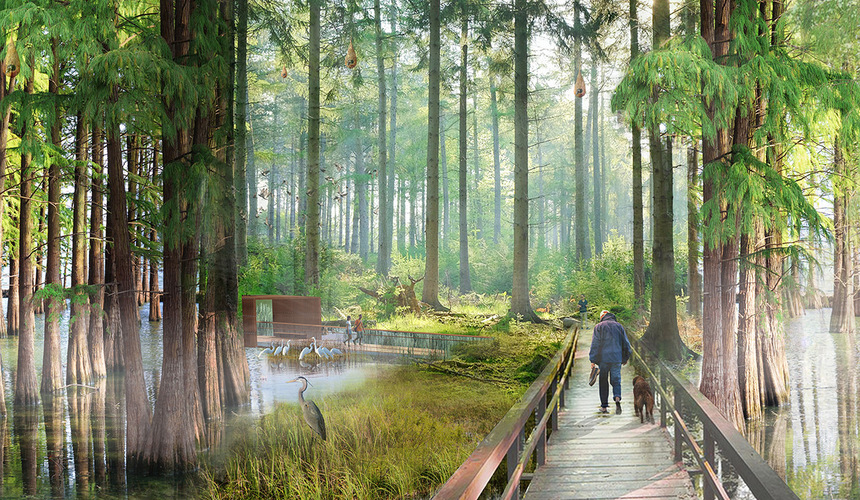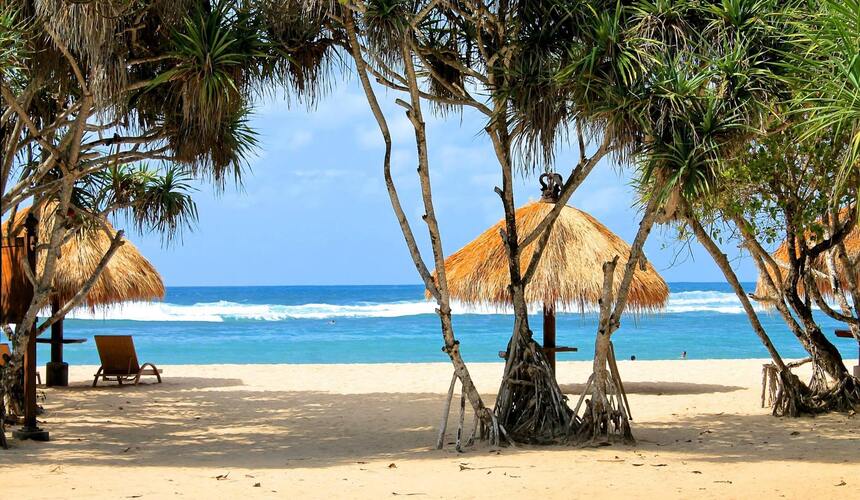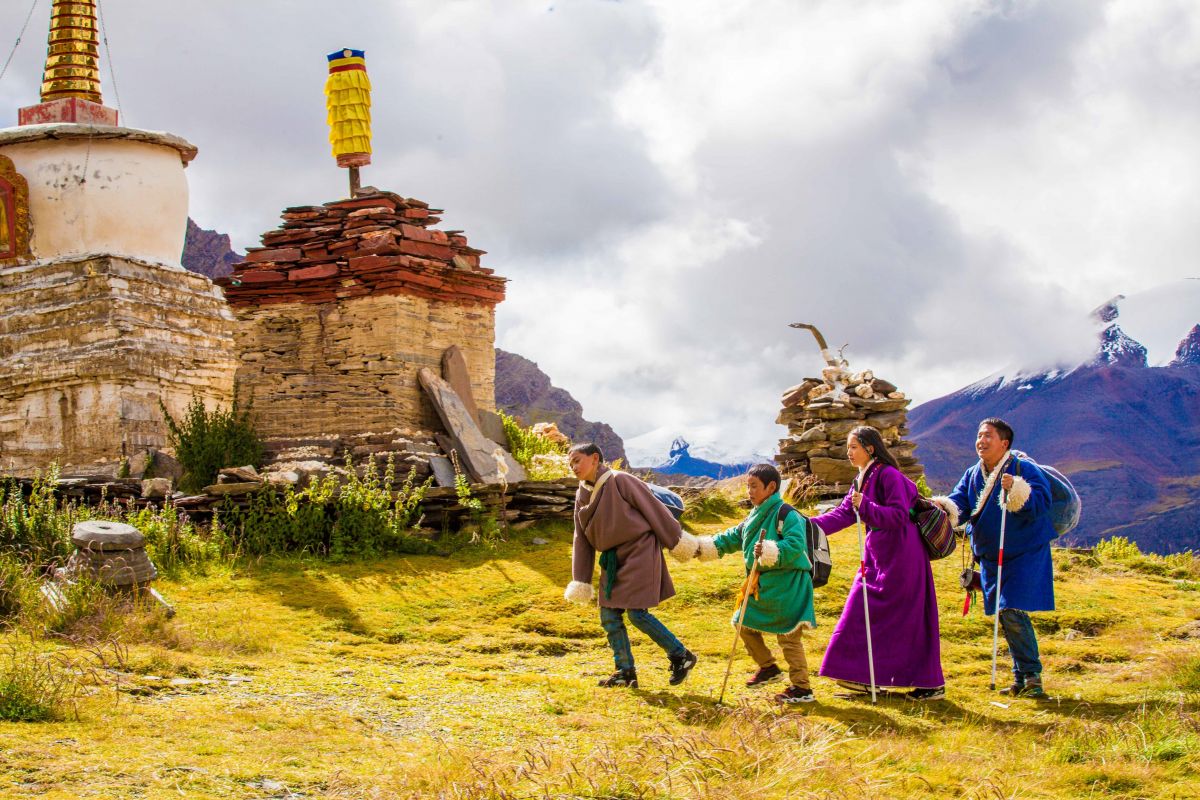
Best of Lhasa and Tsedang in Tibet
Lhasa, the capital city of Tibet autonomous region whose name simply means ‘the land of gods’ in Tibetan, and also known as “the city of sunlight”, is a philosophical city that embraces spirituality that cannot be found anywhere else.
Tsedang city on the other side is where Yarlung Valley is located in the Central Tibet and the 72 KM long valley, often referred as the “cradle of Tibetan civilization”, mainly because of the first Tibetans, and first kings who unified different tribes to form the country. It is only a couple of hours from Lhasa, where you can explore a number of important sights relatively near one another within a day.
Both places are a good base for making trips to numerous castles, monasteries, temples, meditation caves, peaks and stupas.The center of Tibetan Buddhism, Lhasa is featured with four renowned attractions;
The incredible Potala Palace, which has attracted millions of tourists to visit every day from all over the world, is one of the most famous architectural works of the world, sits in the heart of Lhasa city. This is a must-see attraction in Tibet not only for its astounding beauty but also for being the center of Tibetan culture, history and religion. It is also the landmark of the city and former palace of Dalai Lama. The Red Palace, The White Palace, Inside the Potala Palace and The Golden Roof Group are exquisite examples of traditional Tibetan architectures you should not miss in Lhasa.
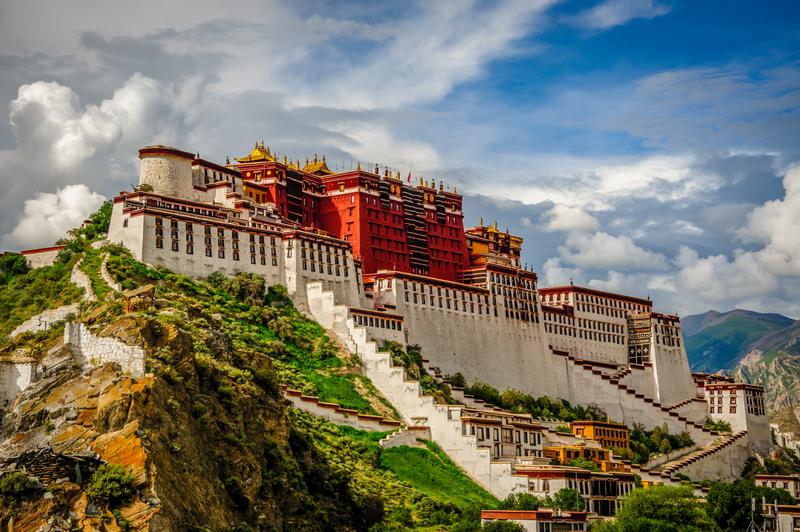
Jokhang Temple known as “the House of the Buddha” is the haven for thousands pilgrims where you can feel the strong devotion of Buddhism of Tibetan. The gigantic architectural complex located at the center of the old Lhasa, east of the Potala Palace, holds a greater position than Potala Palace and considered as the holiest destination for Tibetan Buddhist pilgrims.
This further demonstrates a combination of Tibetan, Chinese, Indian and Nepalese architecture techniques with a history of more than 1300 years. Visitors will be treated to the sight to explore of its various sacred sculptures in 2 groups as religious people in the morning (08:00 – 11:30) and tourists in the afternoon (11:30 to 17:30).
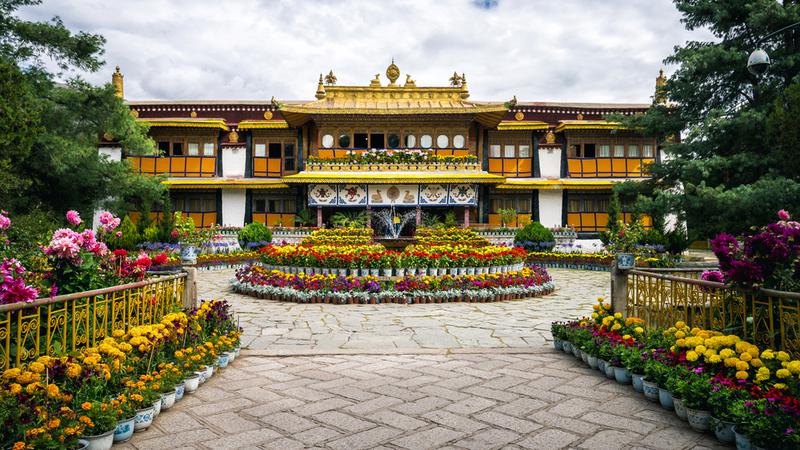 Around the Jokhang temple, you can also find Barkhor Street, popular among tourists as a shopping paradise. It’s also one of the famous circuit in the city you can witness diverse Tibetan treasures and pilgrims walk clockwise around Jokhang Temple through centuries, especially in the late afternoon. The most prosperous center yet the oldest street of Tibet comprise of more than 120 handicrafts shops and 200 stalls of Tibet-related items you can do a bit of souvenir shopping, eat Tibetan or Chinese Muslim food or simply just site-see colorful places in all of Tibet.
Around the Jokhang temple, you can also find Barkhor Street, popular among tourists as a shopping paradise. It’s also one of the famous circuit in the city you can witness diverse Tibetan treasures and pilgrims walk clockwise around Jokhang Temple through centuries, especially in the late afternoon. The most prosperous center yet the oldest street of Tibet comprise of more than 120 handicrafts shops and 200 stalls of Tibet-related items you can do a bit of souvenir shopping, eat Tibetan or Chinese Muslim food or simply just site-see colorful places in all of Tibet.
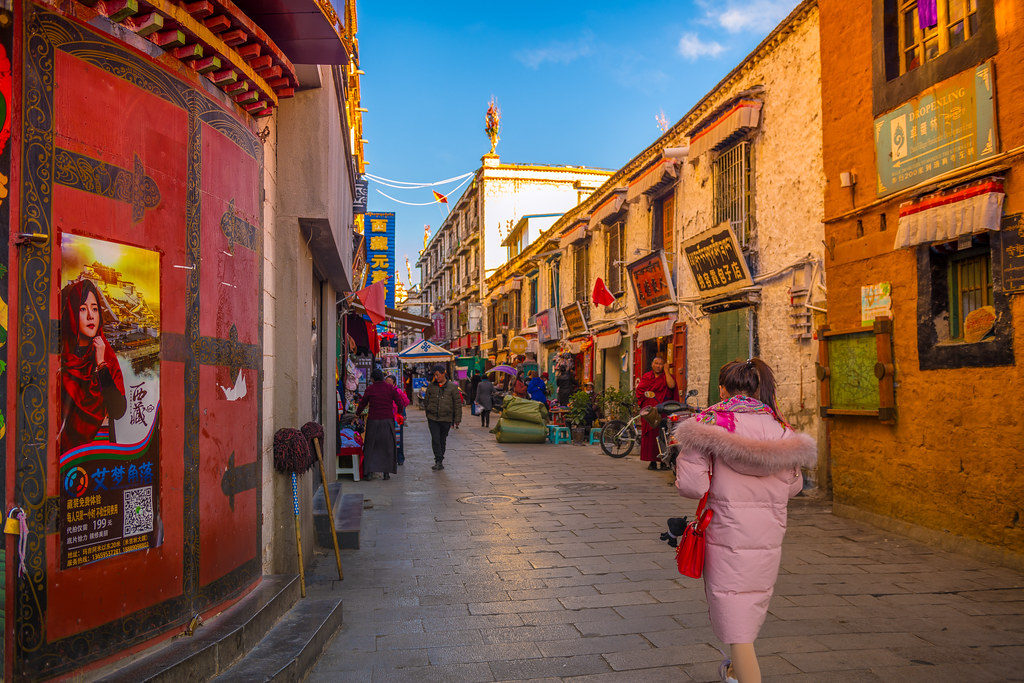 Namtso Lake is a mountain lake on the border between Damxung County of Lhasa Prefecture and Baingoin County of Nagqu Prefecture, approximately 220 kilometers away from north of Lhasa city (4½ hours’ drive). It is the highest lake in the world and the third-largest saltwater lake in the Tibet Autonomous Region of China, extending 70 kilometers from the east toward the west side of the lake. Namtso is not only one of the most beautiful nature views in Tibet but also one of the three famous holy lakes for Tibetan pilgrims. A simply glimpse of the mirror-like turquoise lake is more than enough to comprehend why its called a true pearl in the vast Qinghai Tibet Plateau and “Heavenly Lake” among the locals. Bear in mind to explore this Lake from June to September for most beautiful scenery.
Namtso Lake is a mountain lake on the border between Damxung County of Lhasa Prefecture and Baingoin County of Nagqu Prefecture, approximately 220 kilometers away from north of Lhasa city (4½ hours’ drive). It is the highest lake in the world and the third-largest saltwater lake in the Tibet Autonomous Region of China, extending 70 kilometers from the east toward the west side of the lake. Namtso is not only one of the most beautiful nature views in Tibet but also one of the three famous holy lakes for Tibetan pilgrims. A simply glimpse of the mirror-like turquoise lake is more than enough to comprehend why its called a true pearl in the vast Qinghai Tibet Plateau and “Heavenly Lake” among the locals. Bear in mind to explore this Lake from June to September for most beautiful scenery.
 At Yarlong Valley, you can find three power places that play a vital role in Tibetan culture and history that is well worthy of your time and visit.
At Yarlong Valley, you can find three power places that play a vital role in Tibetan culture and history that is well worthy of your time and visit.
Samye Monastery is the first and the oldest Tibetan Buddhism monastery established in the mid-8th century. The three-story building, built in Han, Tibetan & Indian styles, has several unique architectural features that truly makes you feel like you have entered into a one-of-a-kind monastery. It’s also an important place for pilgrims and has been an active since 1986 by sitting in Zhang county on the northern bank of the Yarlung Zhangpo river. You can take a local boat, which will take 2 hours of crossing the river and another half an hour by a local truck to reach the Samye valley. Hence, make this complex constructed in the form of a mandala, an essential part of your life journey to Yarlong Valley.
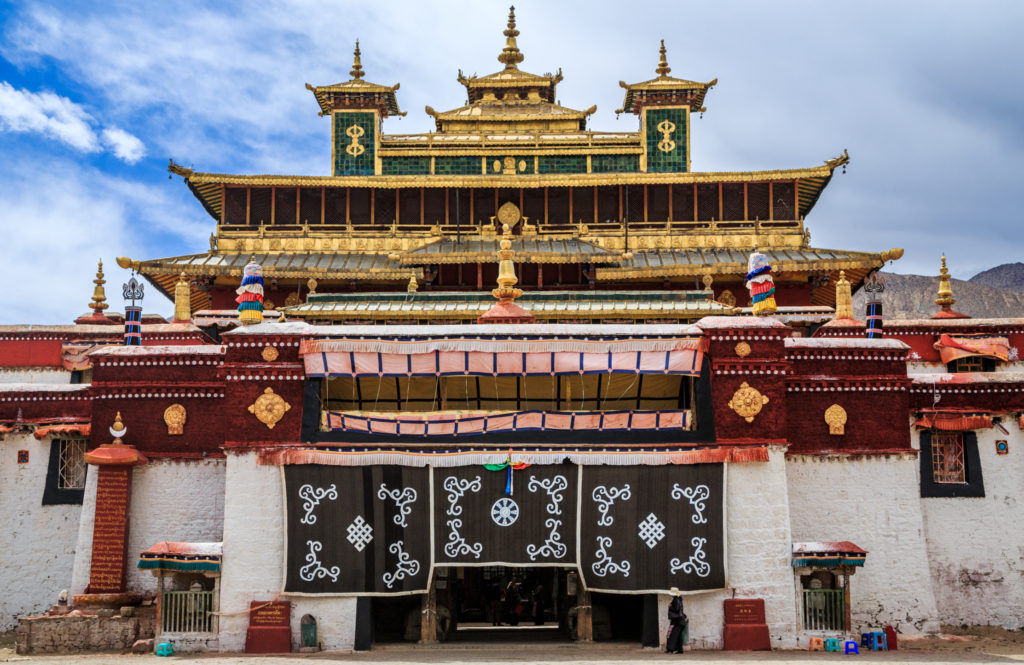 Drive about a 1.5 hours from Samye Monastery to locate the first Tibetan palace, and the oldest building in Tibet – Yumbulagang! An amazing architectural site perched atop a small hill east of the Yarlong River. Its still standing as a reminder of the legendary times where it became a Buddhist temple during the reign of the 5th Dalai Lama after the King Songtsen Gampo moved the capital to Lhasa in the 7th century. The best part of travelling to Yumbulagang besides enjoying stunning views from the top of the fort or at the foot of the surrounding valley, embrace the wonderful culture hanging prayer flags wherever the place you feel warms your heart as it will help you take in all Tibet has to offer.
Drive about a 1.5 hours from Samye Monastery to locate the first Tibetan palace, and the oldest building in Tibet – Yumbulagang! An amazing architectural site perched atop a small hill east of the Yarlong River. Its still standing as a reminder of the legendary times where it became a Buddhist temple during the reign of the 5th Dalai Lama after the King Songtsen Gampo moved the capital to Lhasa in the 7th century. The best part of travelling to Yumbulagang besides enjoying stunning views from the top of the fort or at the foot of the surrounding valley, embrace the wonderful culture hanging prayer flags wherever the place you feel warms your heart as it will help you take in all Tibet has to offer.
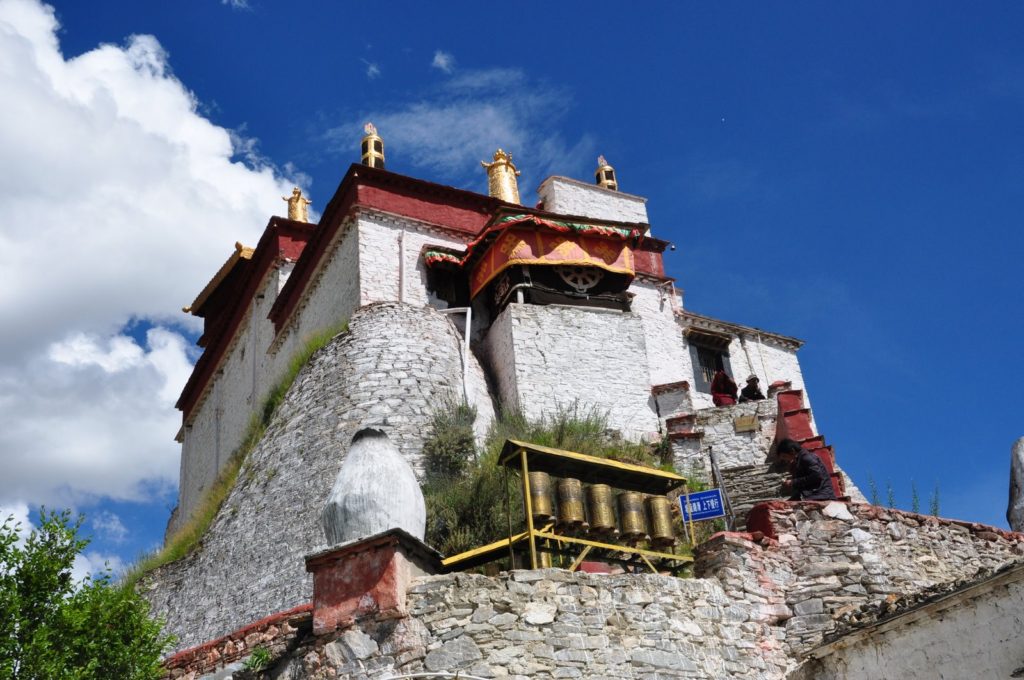 Tradruk Monastery is only 6 km from Yumbulagang and of course one of the oldest buildings in all of Tibet that will give you a dream of its passed glory. The name “Traduk” derived to form two meanings which means a falcon by “Tra” to and dragon by “Duk” in Tibetan language. Once a great king Songtsen Gampo, is the founder of this temple about 7 km South of Tsetang in the 7th century. Later, the 5th Dalai Lama enlarged and added a golden roof to it and then again It was renovated according to the locals after the cultural revolution. However, this is still one of the greatest, largest and most important geomantic temples worth visiting in the Yarlung Valley.
Tradruk Monastery is only 6 km from Yumbulagang and of course one of the oldest buildings in all of Tibet that will give you a dream of its passed glory. The name “Traduk” derived to form two meanings which means a falcon by “Tra” to and dragon by “Duk” in Tibetan language. Once a great king Songtsen Gampo, is the founder of this temple about 7 km South of Tsetang in the 7th century. Later, the 5th Dalai Lama enlarged and added a golden roof to it and then again It was renovated according to the locals after the cultural revolution. However, this is still one of the greatest, largest and most important geomantic temples worth visiting in the Yarlung Valley.
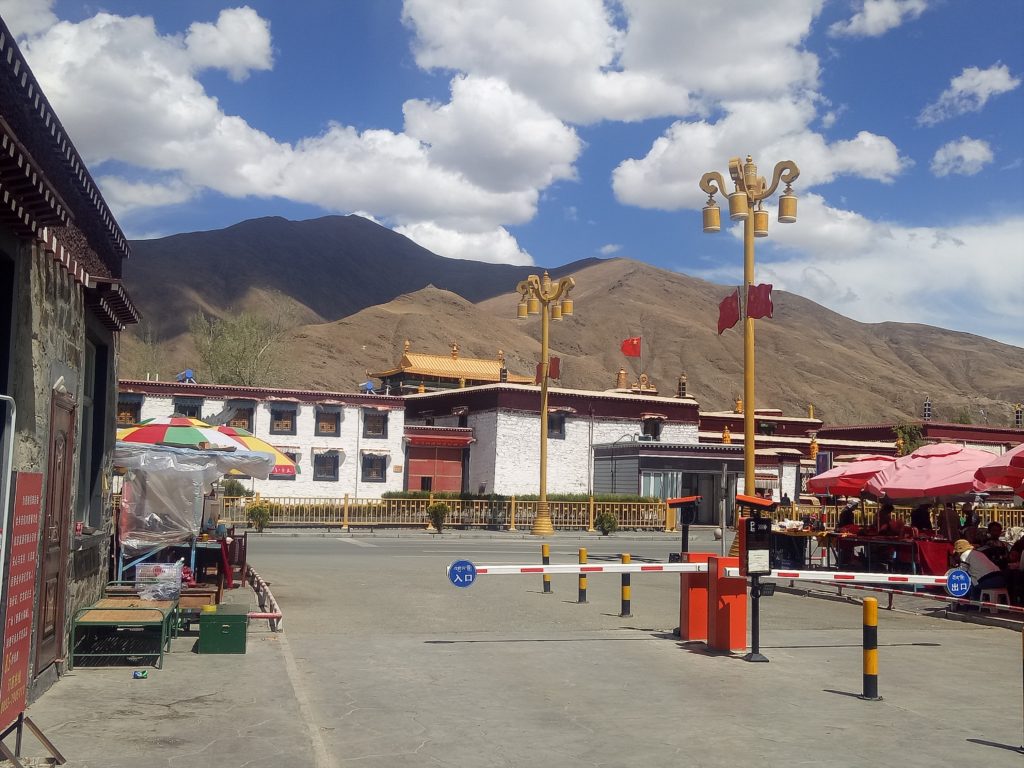
Leave a Reply:
You must be logged in to post a comment.

